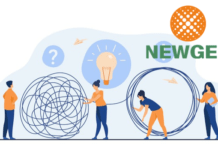Adapting to the new normal was a double whammy for IndiaFirst Life Insurance. The transition to remote and virtual work took place at a time when one of the Company’s former shareholders – Andhra Bank – was merging into the larger Union Bank of India on April 1, 2020. “The challenge was now two-fold,” recollects Praveen Menon, chief people officer, IndiaFirst Life Insurance. “Andhra Bank had about 3,500 branches but the moment it was merged with the Union Bank of India, our bancassurance network immediately expanded to more than 9,500 branches.”
This not only meant that the life insurance company had to hire new sales personnel en masse, but it also had to reorient its existing teams to the new sales environment. “Till March 31, 2020, we were running with a sales philosophy of exclusive distributorship,” explains Menon. “But when Andhra Bank and Corporation Bank merged with the Union Bank of India, each of the entities brought along their own insurance partners. The plan was to move ahead with an open architecture. As a result, every Union Bank of India branch now had three life insurance competitors eyeing the same customer,” he adds.
Blend of buddies
To tackle the challenge, the HR team at IndiaFirst Life Insurance developed a blended solution of a buddy-like system. Instead of simply parking the new salesforce at the new branches added to its network, the life insurance company restructured and shuffled a majority of the team. “We put a healthy mix of existing employees and incoming talent in charge of the new branches,” informs Menon.
The idea was that although it was a new branch, it wasn’t an entirely new experience for the Company’s existing employees. “Since they were aware of our ways of working, setting up a new channel wasn’t such a challenge for them. Their experience blended with a newcomer’s fresh perspective helped us scale the new channel well. Plus, pairing them with the incoming talent also enabled us to impart the Company’s culture to the new employees in the remote- work reality,” he adds.

“We notice there is more ownership now. The sales teams feels empowered that they can simply sit in the confines of their homes and still run a webinar, invite customers, get leads and convert them.”
Virtual hiring & induction
The life insurance company was one of the few that was on a hiring spree when most organisations had put an immediate freeze on hiring. “We hired around 700 salespeople from the market,” states Menon. Of course, every aspect of hiring right up to induction was done virtually. “At that time, one of the first points to be considered was — do we have the required skill set, especially in HR, to evaluate the candidate over a virtual medium?” recounts Menon. “We trained the HR team on how to identify suitable candidates virtually, which proved to be a capability and knowledge-enhancement session for the HR team.”
The Company’s pre-COVID-19 induction sessions that ran into five days turned stale overnight and had to be reworked entirely. “Earlier, it used to be a classroom setting where one could attend day-long sessions, but the same cannot be replicated virtually. One is bound to lose track, or digital fatigue sets in with anything that’s over three hours long,” notes Menon. While the induction sessions were broken into sizeable portions spread over 10 days and curated for the virtual medium, the trainers too were retrained. “The training enabled them to deliver effectively through a virtual medium. They were also pleased with the company-funded upskilling because they felt they were now well-equipped to handle virtual training tools.”
Selling insurance online
As for meeting customers, now that in-person interaction was a big no-no, IndiaFirst Life Insurance decided to support its salesforce by setting up ‘e-sampark’ webinars. “Incidentally I also look after the sales training so we decided to support our sales team,” informs Menon. The Company hosted hour-long financial inclusion webinars wherein customers were invited through its bank partners network. The sales teams were mandated with customer invite targets with each webinar attended by 25 to 40 customers. “The idea was to enable our salespeople to continue meeting customers and generating leads virtually, if not in person. They were pretty excited by the concept too,” adds Menon.
Closing a sale virtually is no child’s play. “A physical meeting is usually a one-on-one interaction, but in a webinar, one is dealing with at least 30-40 customers at once so how does one engage them effectively? And of course, each customer will then have their own specific requirements,” explains Menon. “First we had to curate our programmes in a way that they appealed to a wide selection of people. But even to conduct such a session requires skill,” he adds.
While the initial webinars with customers were piloted by the sales trainers, gradually the Company organised ‘Train the Trainer’ programmes to upskill the rest of the salesforce. “The sales teams were attending the webinars themselves so they got a flavour of connecting with customers virtually. However, with the help of training, they were soon conducting the webinars independently,” says Menon. “We notice there is more ownership now. The sales teams feels empowered that they can simply sit in the confines of their homes and still run a webinar, invite customers, get leads and convert them.”
Value our content... contribute towards our growth. Even a small contribution a month would be of great help for us.
Since eight years, we have been serving the industry through daily news and stories. Our content is free for all and we plan to keep it that way.
Support HRKatha. Pay Here (All it takes is a minute)




































